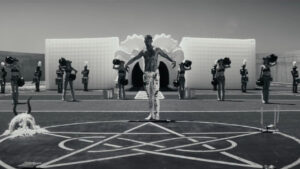The unveiling of the Big Brother 27 house design has sparked considerable buzz amongst enthusiasts, particularly those who appreciate a return to the show’s more classic aesthetic. Reports suggest a deliberate move towards a retro design, reminiscent of earlier seasons, prompting speculation about the overall tone and atmosphere of the upcoming season. This design choice, according to Screen Rant, is expected to create “an old-school BB feel,” generating excitement amongst longtime fans who value the show’s heritage. The implications extend beyond simple nostalgia, however; the design choices reflect broader trends in entertainment’s cyclical embrace of vintage styles and the premium placed on authenticity in a saturated market.
This nostalgic turn in reality television design mirrors a similar trend within luxury goods and experiences. The current market demonstrates a growing appreciation for handcrafted items, vintage pieces, and curated experiences that evoke a sense of history and exclusivity. This echoes a broader cultural shift toward a more discerning consumer base, one less interested in fleeting trends and more focused on enduring quality and heritage. Just as collectors seek out vintage automobiles or rare artwork, viewers are increasingly drawn to entertainment formats that offer a sense of timeless appeal. The emphasis on “old-school BB” in this context becomes a sophisticated marketing strategy, tapping into a desire for authenticity and a rejection of the overly polished, mass-produced feel of some contemporary programming. The strategic appeal of this design choice, as observed by industry analysts, suggests a profound understanding of the evolving preferences of high-net-worth individuals and their influence on entertainment consumption patterns.
The deliberate crafting of the Big Brother 27 set, therefore, transcends mere aesthetics. It’s a calculated move to align the show’s brand with a premium segment of viewers who appreciate a nuanced, curated experience. Consider the parallels with the luxury hospitality sector, where boutique hotels and exclusive resorts frequently leverage historical architecture or vintage design elements to create a sense of unique character and elevated status. By evoking the feeling of “old school BB,” producers are, in essence, positioning the show as a collectible experience, mirroring the premium market’s increasing focus on limited editions, heritage brands, and experiences that promise lasting value. According to reports, the subtle details within the house design—the color palettes, the furniture choices, even the lighting—are all intended to contribute to this carefully constructed atmosphere. This suggests a move towards a more sophisticated target audience, one attuned to subtle cues of quality and authenticity.
Furthermore, the strategic decision to return to a more classic design aesthetic positions Big Brother 27 within a broader cultural context. The renewed interest in vintage styles reflects not only a nostalgic yearning for simpler times but also a deeper appreciation for craftsmanship and quality. This trend is apparent across various luxury sectors, from haute couture to classic automobiles, where heritage and history command premium prices. The resonance of this design choice suggests a sophisticated understanding of the current consumer landscape, recognizing the premium placed on authenticity and curated experiences amongst a discerning audience. Experts in the entertainment industry predict that this strategic shift could not only attract a larger audience but also elevate the show’s overall brand perception, making it more appealing to a sophisticated segment of viewers who value originality and timeless appeal. The success of this strategy remains to be seen, but the initial response suggests a strong potential for tapping into the affluent market’s desire for authentic and curated entertainment.
In conclusion, the seemingly simple decision to design the Big Brother 27 house in a retro style is, in fact, a shrewd marketing move aligning with broader trends in luxury and premium experiences. The strategic use of nostalgia to evoke a sense of authenticity and curated quality positions the show for a more discerning and affluent viewership. By understanding and leveraging this consumer preference for originality and heritage, Big Brother 27’s producers demonstrate a sophisticated understanding of the high-end entertainment market and the evolving demands of its increasingly discerning clientele. The design, therefore, is more than just a set; it is a carefully crafted experience designed to resonate with the luxury consumer’s preference for enduring value and tangible quality.
Credit(s): After Seeing Big Brother 27’s House Design, I Think This Season’s Going To Feel Like Old School BB
This article was created with assistance from AI technology and has been reviewed by our editorial team to ensure accuracy and compliance with our content standards.











